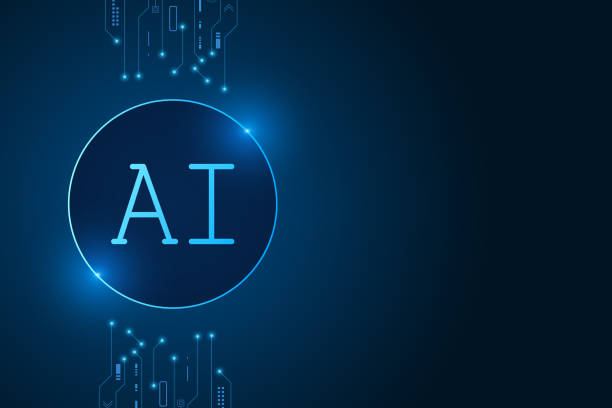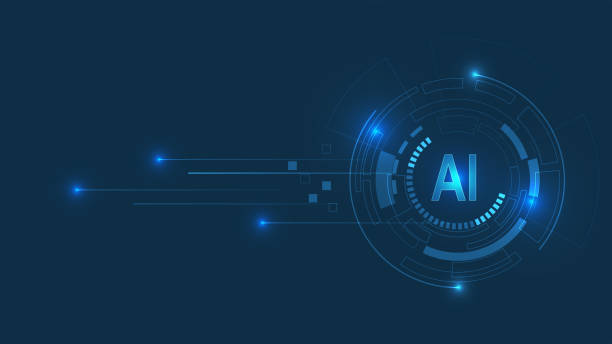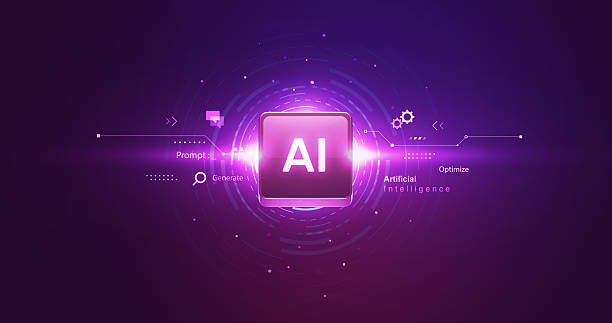What is an AI Robot and Why is it Important?
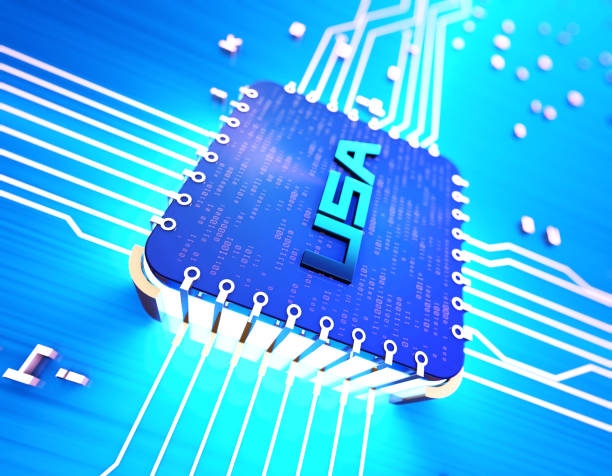
In today’s world, the name #AI_robot is rapidly transforming from a science fiction concept into a tangible reality.
These complex entities, combining robotics and artificial intelligence, are not only capable of performing physical tasks but can also learn from their environment, make decisions, and even interact with humans.
The growing importance of AI robots lies in their ability to fundamentally transform various industries, from manufacturing and healthcare to customer service and space exploration.
Artificial Intelligence, as the mastermind of these robots, enables the processing of massive data, pattern recognition, and even prediction.
This #educational_introduction will help you better understand the basic principles of this technology and its impact on daily life.
In fact, these robots are not just tools to increase efficiency; they are new partners in our work and even personal lives.
A future once only imaginable in movies is now on the verge of becoming reality, thanks to significant advancements in intelligent robotics.
Understanding how this technology works and its potential is essential for all segments of society, from technology experts to ordinary citizens.
Tired of losing customers due to poor e-commerce website design? With Rasawep, solve this problem forever!
✅ Increase sales and visitor-to-customer conversion rate
✅ Smooth and attractive user experience for your customers⚡ Get Free Consultation
The Evolution of AI Robots from Past to Present
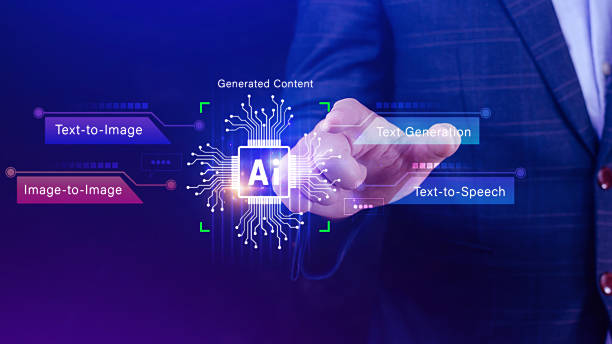
The #AI_robot_evolution is a long and winding story from imagination to reality.
From the first concepts of automated machines in ancient times to early industrial robots in the 20th century, this path has always moved towards #automation and #intelligence.
But the real turning point began with the emergence of Machine Learning and Neural Networks in recent decades.
In the past, robots were merely machines for repetitive tasks; lacking the ability to make decisions or adapt to new environments.
But today, with massive advancements in data processing and computational power, AI-powered robots can learn from past experiences, understand unknown environments, and even perform complex and unstructured tasks.
#News developments in advanced robotics introduce us every day to new capabilities of these machine beings; from surgical robots that operate with unparalleled precision to service robots that assist us in homes and offices.
This #evolutionary_analysis shows how fundamental research in computer science, robotics, and neuroscience has paved the way for the emergence of current intelligent robots, and how each stage of this progress has been a stepping stone to more intelligent and autonomous generations of robots.
Key Components Behind Every AI Robot
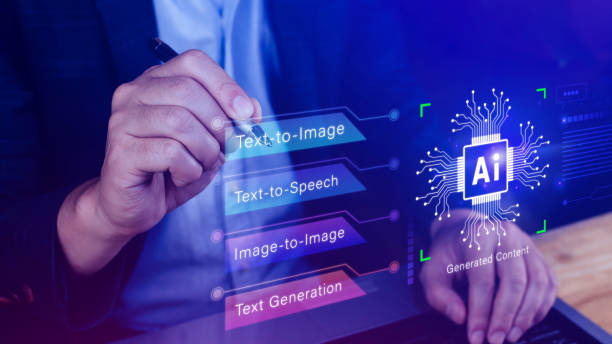
To deeply understand the functioning of an #AI_robot, it is necessary to become familiar with its #specialized_components.
Every robotic AI system consists of three main parts: sensors, actuators, and the intelligent brain (central processing unit).
#Sensors, like the robot’s eyes and ears, collect information from the environment; from visual data to tactile and auditory information.
#Actuators are mechanical parts that allow the robot to move and perform physical tasks, such as robotic arms or wheels.
But the beating heart of every AI robot is Natural Language Processing and AI algorithms that analyze the information received from sensors, make decisions, and send necessary commands to the actuators.
This section includes deep learning models, neural networks, and optimization algorithms that enable the robot to learn, adapt to new conditions, and even predict.
Next, we will provide a #technical_explanation in a table format to clarify the main components and their functions.
These components, working together, provide unique capabilities for intelligent robots, enabling them to operate effectively in complex and dynamic environments.
| Component | Main Function | Examples |
|---|---|---|
| Sensors | Gathering information from the environment | Cameras, microphones, touch sensors, temperature sensors |
| Actuators | Executing commands and physical movement | Motors, robotic arms, wheels, grippers |
| Central Processing Unit (CPU/GPU) | Processing data and executing AI algorithms | Small computers, Application-Specific Integrated Circuits (ASIC) |
| Operating System | Managing hardware and software resources | ROS (Robot Operating System), Linux |
| AI Algorithms | Learning, decision-making, and problem-solving | Deep learning, neural networks, planning algorithms |
Applications of AI Robots in Daily Life and Various Industries
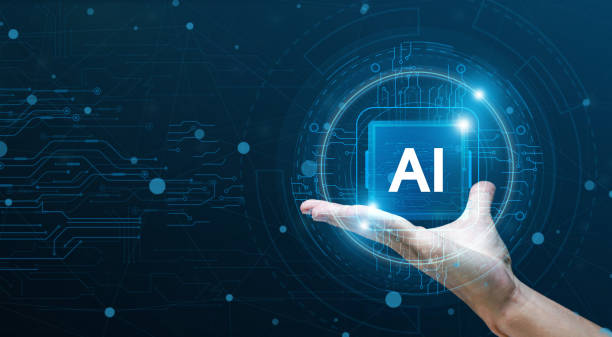
The applications of #AI_robot are no longer limited to science fiction movies; these intelligent machines are increasingly present in #daily_life and #various_industries.
In the industrial sector, #advanced_robotics has brought unparalleled precision and speed to production and assembly lines.
In healthcare, surgical robots, aided by AI, perform complex operations with fewer errors, and nursing robots play a vital role in assisting patients and the elderly.
Even in homes, smart vacuum cleaner robots and home assistant robots have simplified our lives.
This #practical_guide shows how an industrial robot can take on dangerous or repetitive tasks, freeing up human labor for more creative and strategic work.
Furthermore, in agriculture, intelligent robots help farmers optimize crop harvesting and reduce water consumption.
In the service sector, from waiter robots in restaurants to customer support robots that answer questions, all demonstrate the wide range of applications of this technology.
This diversity in applications paints a future where interaction with AI robots will become commonplace, significantly increasing human efficiency and quality of life.
Did you know that poor online store design can drive away up to 70% of your potential customers? Rasawep transforms your sales with professional and user-friendly e-commerce website designs.
✅ Significant increase in sales and revenue
✅ Full optimization for search engines and mobile
⚡ [Get Free Website Design Consultation from Rasawep]
The Impact of AI Robots on the Job Market and Global Economy

One of the #thought-provoking_content and most controversial aspects of #AI_robot is its impact on the #job_market and #global_economy.
Some are concerned about the loss of traditional jobs due to automation, while others believe that this technology will create new job opportunities and lead to an overall increase in productivity.
Economic analyses show that intelligent robots can reduce production costs and improve product quality across various industries.
This can lead to increased competitiveness for countries and companies globally.
However, the need to invest in education and training to prepare the workforce for #future_jobs that require new skills in interacting with automation and artificial intelligence is of paramount importance.
This is a complex #socio-economic_analysis that requires a comprehensive perspective.
Governments and organizations must adopt policies that both benefit from technology and prevent potential harm to the workforce.
Discussions around the concept of “Universal Basic Income” have also emerged in this context, as a solution to address unemployment caused by the advancement of #AI-powered_robotics.
The future of the global economy, with the increasing presence of intelligent robotic agents, will undoubtedly undergo fundamental changes, and preparedness for these changes is crucial.
Ethical and Social Challenges in Facing AI Robots
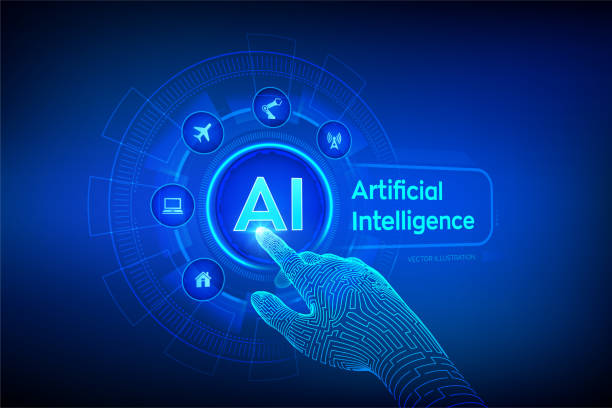
The widespread emergence of #AI_robot brings not only economic and operational benefits but also profound #ethical_challenges and #social ones.
One of the main questions is the issue of #accountability: If an AI-powered robotic system makes an error, who is responsible? The designer, the manufacturer, or the user? This #thought-provoking_content is particularly important in areas such as autonomous vehicles or military robots.
Privacy issues are another concern, as these robots can collect and process large amounts of personal data.
Also, the psychological impact of interacting with highly human-like robots, and the possibility of creating dependency or even losing human communication skills, are among the debated topics.
This #social_analysis requires the formulation of new laws and regulations that can harmonize technological progress with the preservation of human and ethical values.
AI Ethics, as a new field of study, is striving to provide frameworks for the responsible development and use of intelligent robotic agents.
Addressing potential biases in algorithms that could lead to discrimination is another important task in this regard.
Societies must be prepared to discuss and decide on a future where AI robots play a central role.
The Future of AI Robots: Predictions and New Trends

The future of #AI_robot is full of exciting #predictions and #new_trends.
Future robots are expected to be smarter, more autonomous, and more adaptable.
One of the most important trends is the development of #collaborative_robots (cobots) that are designed to work alongside humans, not replace them.
These robots will be safer and more intuitive and can operate optimally in shared environments.
Furthermore, advancements in #Soft_Robotics enable the creation of robots made from flexible materials that can interact with their surroundings in new ways, such as robots that can move through tight spaces or manipulate delicate objects without causing damage.
The #most_specialized advancements in sensors, computational power, and Reinforcement Learning algorithms will enable AI robotic systems to perform more complex tasks and even exhibit more creativity.
There is #news about new generations of medical robotics that can perform ultra-precise surgeries or deliver drugs targeted within the body.
The table below shows some of the key trends shaping the future of AI robots.
| Trend | Description | Potential Application |
|---|---|---|
| Collaborative Robots (Cobots) | Robots that work safely alongside humans. | Collaborative assembly, assistance in production lines, cooperation in warehouses. |
| Soft Robotics | Robots made from flexible materials for safe interaction and complex movements. | Internal surgical robots, rescue robots in hazardous environments. |
| Advanced Self-Learning | The ability of robots to learn independently from experiences and data. | Optimization of industrial processes, development of exploration robots. |
| Integration with IoT and 5G | Connecting robots to the Internet of Things network for fast data exchange. | Smart cities, smart factories, remote medicine. |
| Explainable AI (XAI) | Development of algorithms that clarify their decisions. | Increased user trust, improved reliability in sensitive applications. |
How to Start Learning and Developing AI Robots
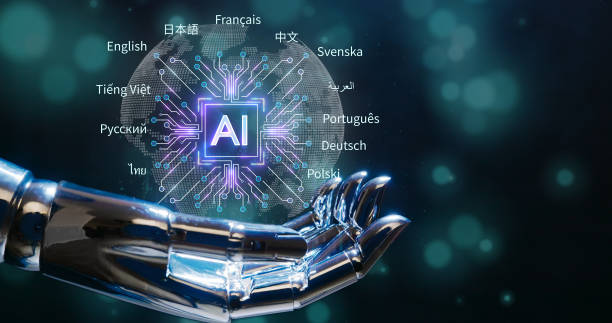
For those interested in entering the world of #AI_robot, #learning and #development in this field are very #educational and exciting.
Starting requires familiarity with basic robotics concepts, programming (especially Python), and the principles of artificial intelligence.
The first step is to understand key machine learning algorithms such as regression, classification, and neural networks.
Then, one can move on to more specialized frameworks like TensorFlow or PyTorch, which provide powerful tools for building AI models.
For the robotics part, starting with simple robotic kits like Arduino or Raspberry Pi and learning to control motors and sensors is a #practical_guide.
Small and manageable projects, such as building a line-following robot or a simple robotic arm, can provide valuable experience.
Participating in workshops, online courses, and studying #specialized articles can also be very helpful.
This path requires patience and perseverance, but the result, the ability to build and program an intelligent machine that can learn from its environment and make decisions, is very rewarding.
There are also many free resources and open-source projects that can serve as an excellent starting point for those interested in #robotic_AI_systems.
Did you know that poor online store design can drive away up to 70% of your potential customers? Rasawep transforms your sales with professional and user-friendly e-commerce website designs.
✅ Significant increase in sales and revenue
✅ Full optimization for search engines and mobile
⚡ [Get Free Consultation from Rasawep]
Human-AI Robot Coexistence: A Shared Future
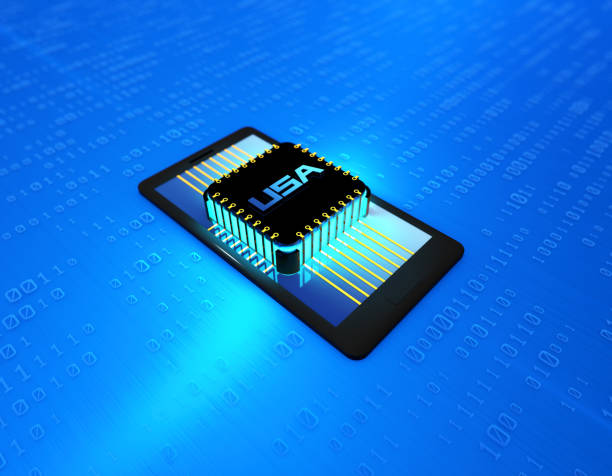
The concept of #human_coexistence and #AI_robot is one of the most fascinating and #most_thought-provoking_content aspects of the future.
Contrary to common portrayals in science fiction films that depict robots as a threat to humanity, the future predicted by many experts is one of cooperation and complementarity.
#Intelligent_robots can improve #quality_of_life for humans by performing dangerous, repetitive, or strenuous tasks, allowing us to focus on more creative, strategic, and meaningful activities.
In areas such as medicine, space exploration, and even education, advanced_robotics can act as a powerful assistant for humans.
This #philosophical_explanation points out that our relationship with #intelligent_robotic_agent will likely be similar to our relationship with other powerful tools; tools intelligently designed and employed to help achieve human goals.
The main challenge in this coexistence lies not in the capabilities of robots, but in the ability of humans to adapt, learn new skills, and ethically manage this technology.
A robot is ultimately a tool whose power rests in the hands of its users.
Our shared future with intelligent machines depends on how they are designed and used to ensure they serve as helpers, not replacements.
Conclusion: AI Robot, a Gateway to a New Era
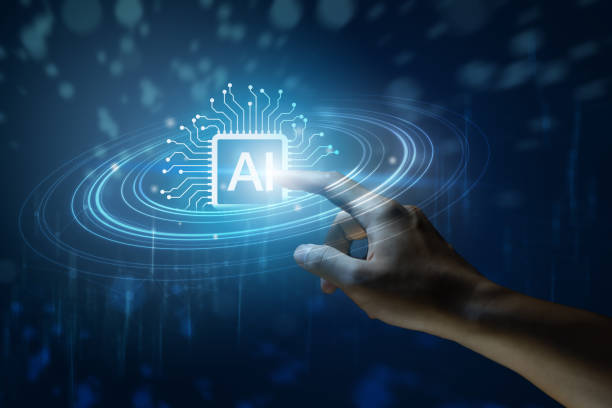
Ultimately, it can be said that #AI_robot is not just a technological advancement but a #gateway_to_a_new_era in human history.
From our #smart_homes to the #factories_of_the_future, the presence of #robotic_AI will inevitably expand.
The analytical, self-learning, and automation capabilities of these robots offer immense potential for solving major global challenges, from climate change to diseases and resource shortages.
However, as also highlighted in previous sections of this #comprehensive_analysis, to fully harness this potential, we need a responsible and ethical approach.
Developing regulations, training the workforce to adapt to new jobs, and fostering public dialogue about a future where humans and robots coexist peacefully are of paramount importance.
The intelligent robotic agent is a tremendous force for transformation that can significantly contribute to human well-being and progress, provided it is guided with a long-term perspective and with consideration for all social and ethical aspects.
The future that the AI robot brings to us is one that will be built through cooperation, innovation, and commitment to human values.
This new era brings not only challenges but also countless opportunities that must be intelligently seized.
Frequently Asked Questions
| Question | Answer |
|---|---|
| What is an AI robot? | It is a robot that uses artificial intelligence capabilities to understand its environment, reason, learn, and make decisions to perform complex tasks autonomously. |
| What is the main difference between a regular robot and an AI robot? | AI robots can learn and adapt to their environment, while regular robots typically operate based on fixed, predetermined programming. |
| In which fields are AI robots used? | In fields such as industry (production lines), medicine (robotic surgeries), services (customer support, smart vacuum cleaners), exploration (space and underwater), and entertainment. |
| How do AI robots learn? | They acquire new skills by analyzing large data sets and identifying patterns through Machine Learning and Deep Learning algorithms. |
| Can AI robots have emotions? | Currently, no. They can identify or simulate emotions, but they do not experience real emotions like humans. |
| What are the most important advantages of using AI robots? | Increased productivity, reduced human error, performance of dangerous or repetitive tasks, and provision of innovative and efficient services. |
| What challenges exist in the development of AI robots? | The need for abundant and high-quality data, algorithmic complexity, ethical issues, cybersecurity, and high research and development costs. |
| Are AI robots dangerous for humans? | With adherence to safe design principles and ethical regulations, no. Concerns are more related to social and economic impacts such as changes in the job market. |
| What is an example of an AI robot in daily life? | Smart vacuum cleaner robots (like Roomba) that automatically map and clean homes, or intelligent voice assistants (like Siri and Alexa). |
| How is the future of AI robots predicted? | They are expected to become smarter, more autonomous, and capable of more complex interactions with humans, playing a more significant role in industry, medicine, transportation, and daily life. |
And other services of Rasawep advertising agency in the field of advertising
Intelligent Direct Marketing: An effective tool for analyzing customer behavior with intelligent data analysis.
Intelligent Social Media: Professional optimization for digital branding using marketing automation.
Intelligent Marketing Automation: An effective tool for improving SEO ranking with precise audience targeting.
Intelligent Brand Identity: An effective tool for user engagement with precise audience targeting.
Intelligent Marketplace: A professional solution for increasing website traffic with a focus on precise audience targeting.
And over hundreds of other services in the field of internet advertising, advertising consultation, and organizational solutions
Internet Advertising | Advertising Strategy | Advertorials
Resources
Article on the Future of Artificial Intelligence
Robotic Developments in the New Era
Recent Advancements in Artificial Intelligence
Challenges of Artificial Intelligence
? Rasawep Afarin Digital Marketing Agency, your strategic partner for lasting brilliance in the online space. By providing innovative solutions, including multilingual website design, we help your business transcend boundaries and shine in global markets.
📍 Tehran, Mirdamad Street, next to Bank Markazi, Southern Kazeroon Alley, Ramin Alley No. 6

